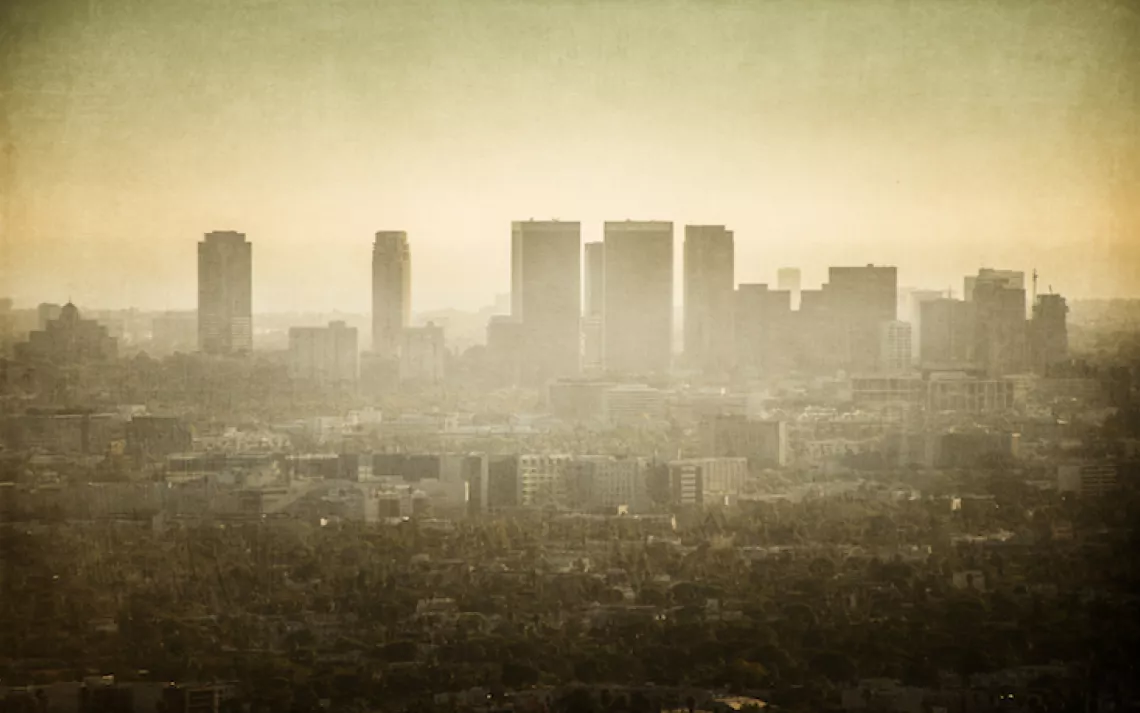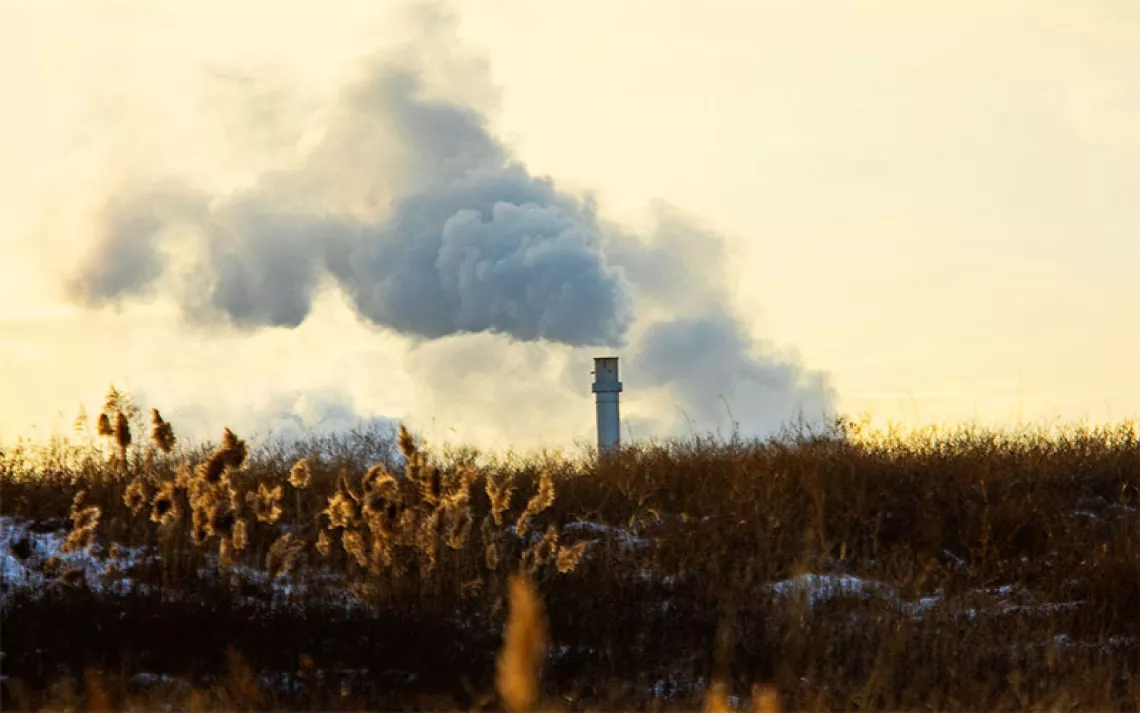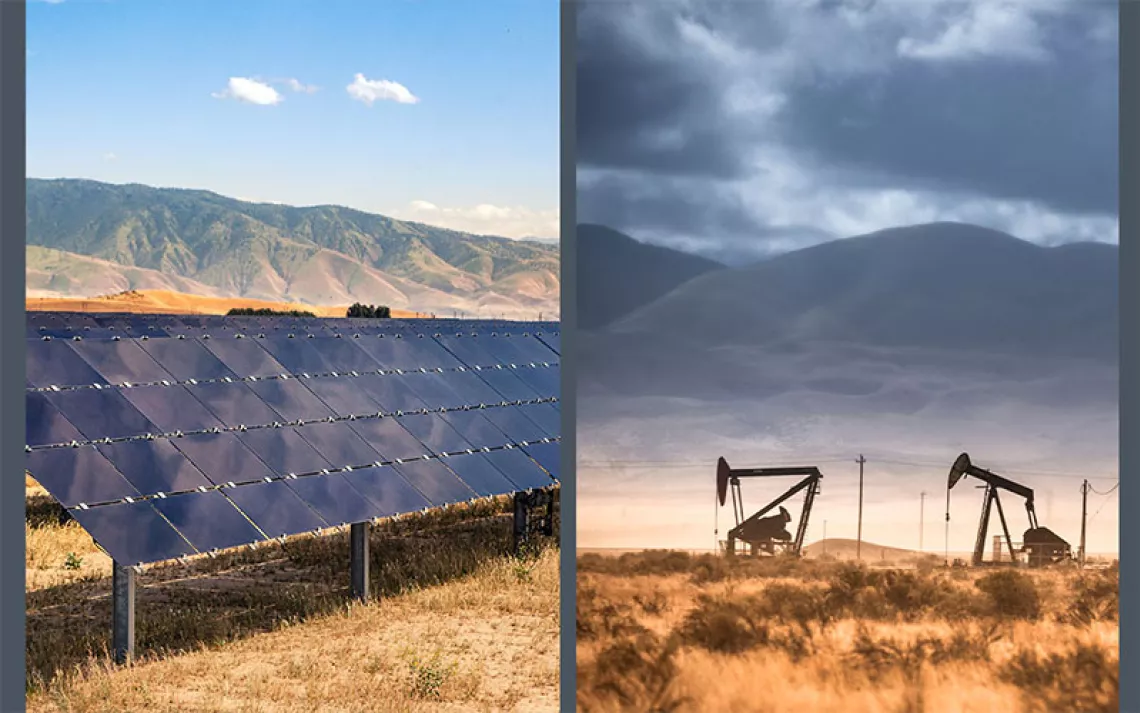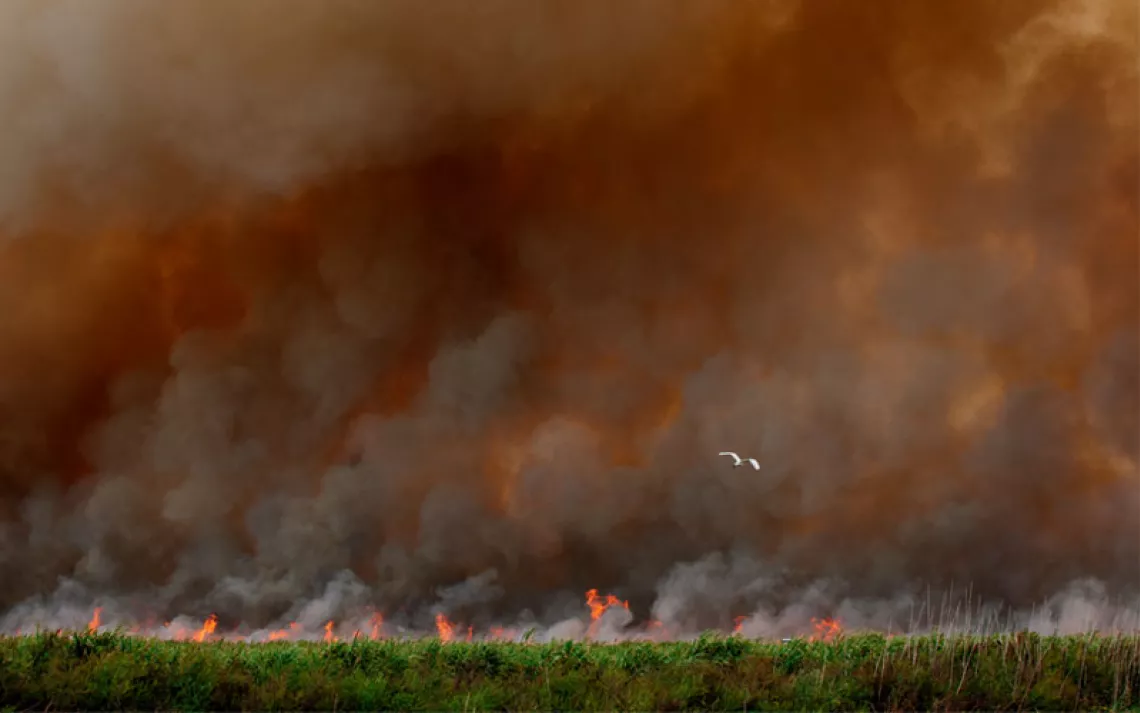Breathe Uneasy
Trump administration halts air pollution reduction as Congress rolls back protections

Photo by MYDinga/iStock.
One of President Trump’s first actions upon taking office was to issue a memorandum freezing the implementation of federal rules and regulations. While this is not unusual for an incoming administration, this memo’s potential impact is expected to be greater than similar moves by previous presidents.
Under the January 20 order, any rules, regulations, and new federal agency policy guidance documents that had not yet taken effect are on hold until the Trump administration “reviews and approves” them. And while this freeze may result in only a 60-day temporary delay until these rules take effect, there’s no guarantee that they won’t be delayed longer, rewritten, or even withdrawn.
If this all sounds technical and abstract, then consider this: Several of the frozen rules are important to protecting everyday public health and safety.
Many of the Environmental Protection Agency rules that have been suspended are intended to reduce air pollution, mostly outdoors but indoors as well. Also on hold are safety requirements and new emergency response measures that were drafted in the wake of the 2013 West, Texas fertilizer plant explosion that killed 15 people and injured more than 150—rules designed to prevent accidents at industrial plants that use hazardous chemicals and protect the surrounding community. Also frozen are new training requirements for school bus drivers and drivers of trucks transporting hazardous materials. A rule to reduce emissions of formaldehyde (a human carcinogen) from manufactured wood products like plywood and particle board is also in limbo. Still other suspended rules affect workplace safety, including exposure to hazardous pesticides and the carcinogenic metal beryllium.
At the same time, Congressional Republicans have introduced measures to undo recently finalized ozone and particulate pollution control measures; delay current EPA smog pollution limits; and “nullify” the EPA’s new safety rules for hazardous chemicals facilities.
About 20 of the rules now on hold were enacted to protect air quality. These include EPA rules designed to ensure that communities around the country meet current Clean Air Act standards, specifically for ozone, sulfur dioxide, and the fine particulate matter called PM 2.5. The ultimate goal of these regulations is to protect people from respiratory diseases like asthma, chronic bronchitis and emphysema, and from heart and other cardiovascular diseases.
Public health advocates are dismayed by the suspension of such rules, many of which have been in the works for nearly 10 years.
“The science is absolutely clear and transparent, and there’s no question that the standards we have are a bare minimum of what we should expect government to do to protect citizens,” says Sylvia Brandt, University of Massachusetts Amherst associate professor of econometrics and environmental economics.
“We are definitely concerned,” says American Lung Association (ALA) assistant vice president for national policy, Janice Nolen. She also worried that rules to control radon emissions—the second-leading cause of lung cancer—are now caught in the regulatory freeze. “Steps that would delay those regulations make it harder to reduce recognized air pollutants,” she explains.
The health effects of air pollution are widely felt. Nearly 18 million Americans—more than one-third of them children—suffer from asthma. According to the U.S. Centers for Disease Control and Prevention, asthma rates are at an all-time high. The CDC also estimates that asthma costs the United States $56 billion each year. Heart disease, which air pollution and related environmental conditions can exacerbate, is the leading cause of death in the United States, and costs the country an estimated $207 billion annually. “These costs have been quantified extensively,” Nolen says.
While the Trump administration says such regulations are business impediments, the EPA has estimated that the monetary benefits of clean air protections are 30 times their implementation cost. “As a business person, that’s an incredible return—30 to 1,” Brandt says.
“I would argue that the benefits are even larger because of systematic ways the EPA does not include certain benefits,” she explains. Among these are the full costs of mothers forgoing work to care for sick children. Looking at the overall costs associated with childhood asthma in Los Angeles County alone, Brandt and colleagues calculated that the savings from tighter air standards could finance fulltime preschool for 2,000 children.
There is also growing evidence that some types of air pollution—especially PM 2.5—are linked to preterm birth. Preterm babies are at risk for a wide range of potentially serious adverse health outcomes. These include respiratory and cardiac problems, infections during infancy, and early childhood and behavioral, educational, and psychological problems later in life. These babies are also at higher risk for adult diseases that include diabetes and hypertension. Currently about one out of every 10 babies born in the United States is preterm.
Recent research by New York University associate professor of pediatrics and environmental medicine Leo Trasande and colleagues estimates that a single year of U.S. preterm births linked to air pollution cost more than $4 billion in combined medical care plus costs associated with diminished IQ, learning problems, and other developmental delays. But as with the costs associated with pollution-linked respiratory disease, these numbers likely underestimate the full scope of the problem, since there are likely many more preterm babies that aren’t included in these statistics.
The “Accidental Release Prevention Requirements” now on hold—the hazardous chemical facility safety measures enacted under the Clean Air Act—affect communities all across the country. There are about 12,500 facilities nationwide that would be required to have such safety plans. An analysis by the Center for Effective Government found that about 12,000 schools—and nearly one in 10 U.S. children—are within one mile of an industrial facility that uses or stores dangerous chemicals.
The Obama-era rule that President Trump suspended would require companies to implement new accident prevention programs. It would also improve emergency response planning and increase availability of hazardous chemical information, especially for first-responders. According to EPA data, these facilities have approximately 150 accidents annually—nearly one every other day.
Who is most affected by hazardous air pollution—indoor and outdoor—and most at risk of being affected by industrial plant accidents? Low-income communities and communities of color, with children affected disproportionally, says Frederica Perera, professor of public health and director of the Columbia Center for Children’s Environmental Health and Columbia University’s Mailman School of Public Health. Her research has found links between early life exposure to air pollution and developmental problems like childhood attention deficit hyperactivity disorder, or ADHD.
Despite his Electoral College win, President Trump has no mandate for these rollbacks of public health and safety rules, according to public opinion surveys. A poll conducted in January by the American Lung Association found 61 percent of Americans favor maintaining current air pollution standards. According to the ALA’s national president and CEO, Harold Wimmer, “More than half of all Americans breathe polluted air…It’s no surprise that American voters strongly support maintaining safeguards to protect their health.” But the White House and Congress appear determined to shred those safeguards.
In response, the ALA, along with the American Public Health Association, National Medical Association, and other national health groups have written to Congress opposing legislation they say will make it harder for federal agencies to protect public health, saying, “Imposing delays and roadblocks in the federal rulemaking process will result in premature deaths and health problems that could have been prevented.”
 The Magazine of The Sierra Club
The Magazine of The Sierra Club



